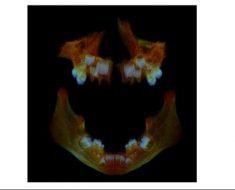Oregon and Kentucky recently enacted policies to eliminate financial disincentives that may have deterred people from undergoing a follow-up colonoscopy after a positive result on a noninvasive screening test for colorectal cancer (CRC).
A new analysis shows that the impact has been mixed. The policies led to significantly increased overall CRC screening and use of noninvasive testing in Oregon but not Kentucky.
The study was published online in JAMA Network Open.
The Affordable Care Act mandates that several CRC screening tests be covered without cost-sharing for people at average risk for CRC. However, lingering cost barriers remain for some people who have a positive initial screening test result and who need follow-up colonoscopy.
This led Kentucky in 2016 and Oregon in 2017 to enact policies that eliminate cost-sharing. Earlier this year, federal guidance eliminated cost-sharing for colonoscopies following noninvasive CRC screening tests for commercial insurers, and a similar policy is under consideration for Medicare.
For their study, Douglas Barthold, PhD, with the University of Washington, Seattle, and colleagues used claims data to evaluate CRC screening rates in Oregon and Kentucky, compared with rates in neighboring states that do not have cost-sharing policies.
The sample included more than 1.2 million individuals aged 45 to 64 living in Oregon, Kentucky, and nearby states from 2012 to 2019. Overall, about 15% of the cohort underwent any CRC screening; 8% underwent colonoscopy.
After the Oregon policy that eliminated cost-sharing went into effect, Oregonians had 6% higher odds of receiving any CRC screening (odds ratio [OR], 1.06; 95% CI: 1.00 – 1.06; P = .03) and 35% higher odds of undergoing an initial noninvasive test (OR, 0.65; 95% CI: 0.58 – 0.73; P < .001), compared with neighboring states that did not implement a similar policy.
But there were no significant differences in total CRC screening use in Kentucky after policy implementation compared with neighboring states.
The odds of receiving a colonoscopy conditional on undergoing noninvasive CRC screening were not statistically different in Oregon or Kentucky, compared with neighboring states.
“These findings suggest that the enactment of policies that remove financial barriers is merely one of many elements (eg, health literacy, outreach, transportation, access to care) that may help to achieve desired cancer screening outcomes,” write Barthold and colleagues.
The study had no commercial funding. Barthold reports no relevant financial relationships.
JAMA Netw Open. Published online June 14, 2022. Full text
For more news, follow Medscape on Facebook, Twitter, Instagram, and YouTube.
Source: Read Full Article





